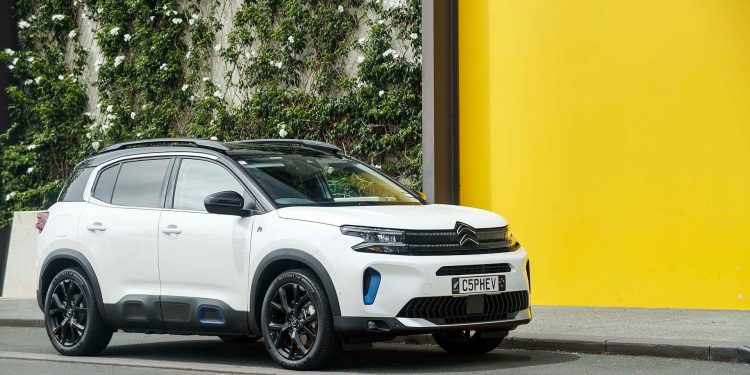2023 Citroen C5 Shine Hybrid review
Words: Kyle Cassidy | Photos: Tom Gasnier
Adding a plug-in option to your line-up is a smart move nowadays. We check out the C5 Shine hybrid.
There is another plug-in hybrid option on the market with the arrival of the Citroen C5 PHEV. It’s part of a refreshed line-up, albeit one that consists of just two choices, a petrol and a hybrid, both labelled ‘Shine’. And both offer buyers a rebate on account of their low emissions profile.
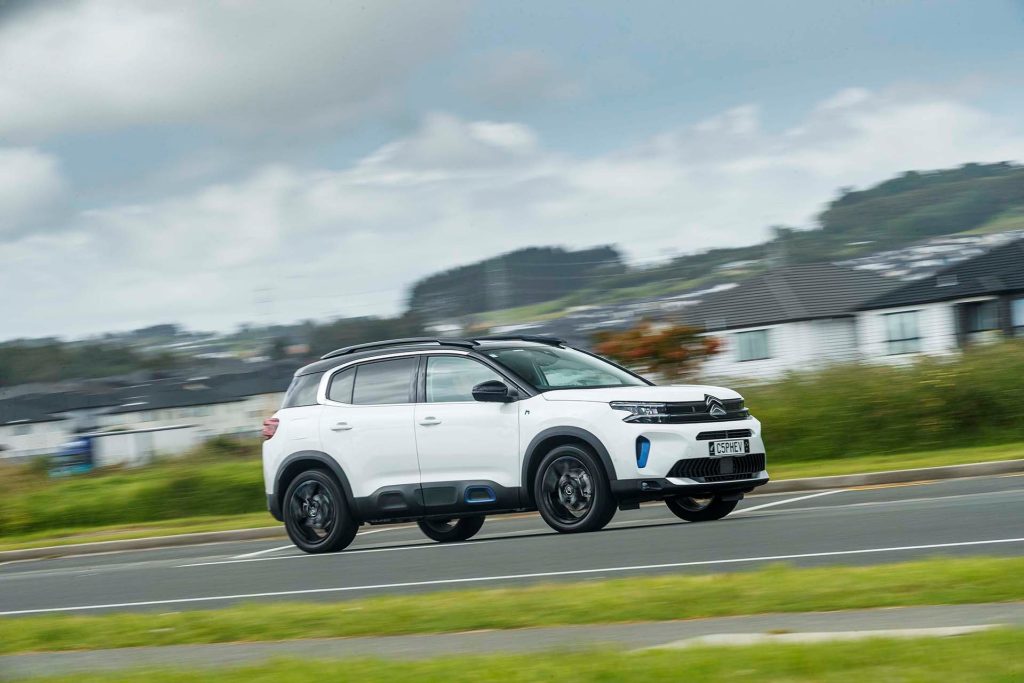
The more conventional Shiner comes in at $58,990, powered by a 1.6-litre turbopetrol matched with an eight-speed auto. Vitals include output of 133kW and 250Nm, a 0-100km/h claim of 8.2 sec with fuel use stated at 6.3L/100km, and emissions at 144g/km. That’s good for a rebate of $1201.
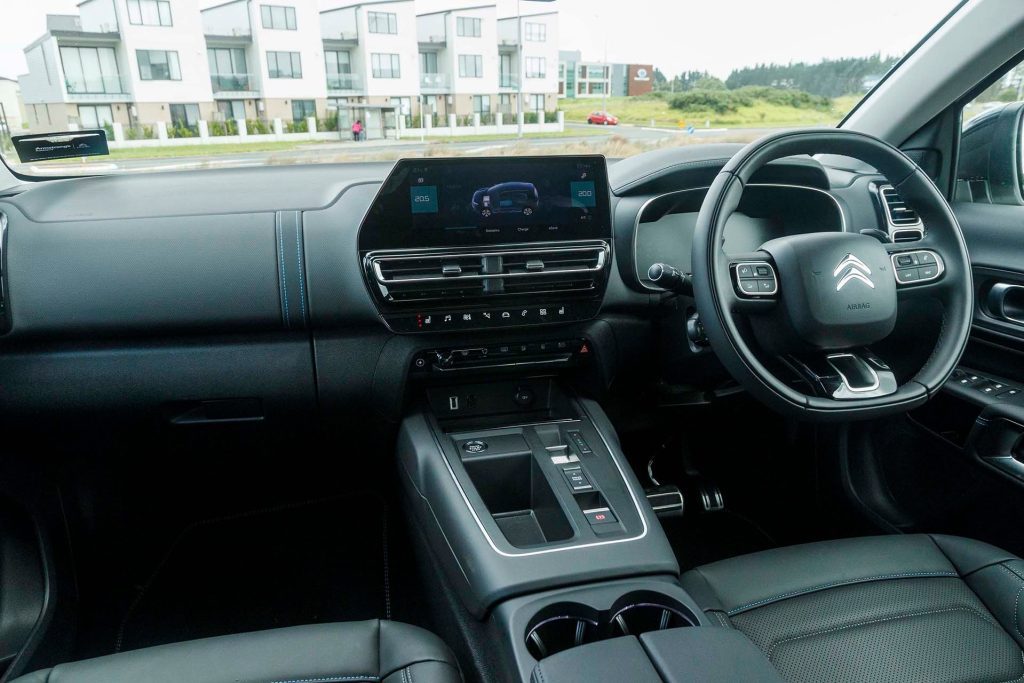
The hybrid, being a plug-in variety, is claimed to consume just 1.0L/100km, with emissions a lowly 19g/km. And so it gets $5750 back from the Clean Car scheme. However, the premium to go half electric is rather steep, the Shine Hybrid costing $79,990 (though this includes on roads whereas they are extra for the ICE model). The price takes a little of the, er, shine off the petrol electric, as you’ll be needing to do many miles to have any hope of recouping the premium from lower fuel bills. But as with any low-emissions solution, cold hard economics aren’t the only thing to consider; there are aspects like local air quality and the like. Not everyone acknowledges these benefits, but if you are the sort who does, and the monetary cost is not a primary concern, then read on.

This PHEV combines a 1.6-litre petrol four with an 81kW/320Nm motor to deliver a combined 165kW/360Nm. Electricity is supplied by a 13.2kWh lithium-ion battery. It’s a front driver, both the engine and motor working via the eight-speed auto. When in the Electric drive mode (the others being Hybrid and Sport) the claim is for 47km of ‘emission-free travel’ which means about 40-ish around town, fewer if you take to the motorway. It’ll EV beyond 100km/h, though Hybrid mode is better suited to this sort of travel.
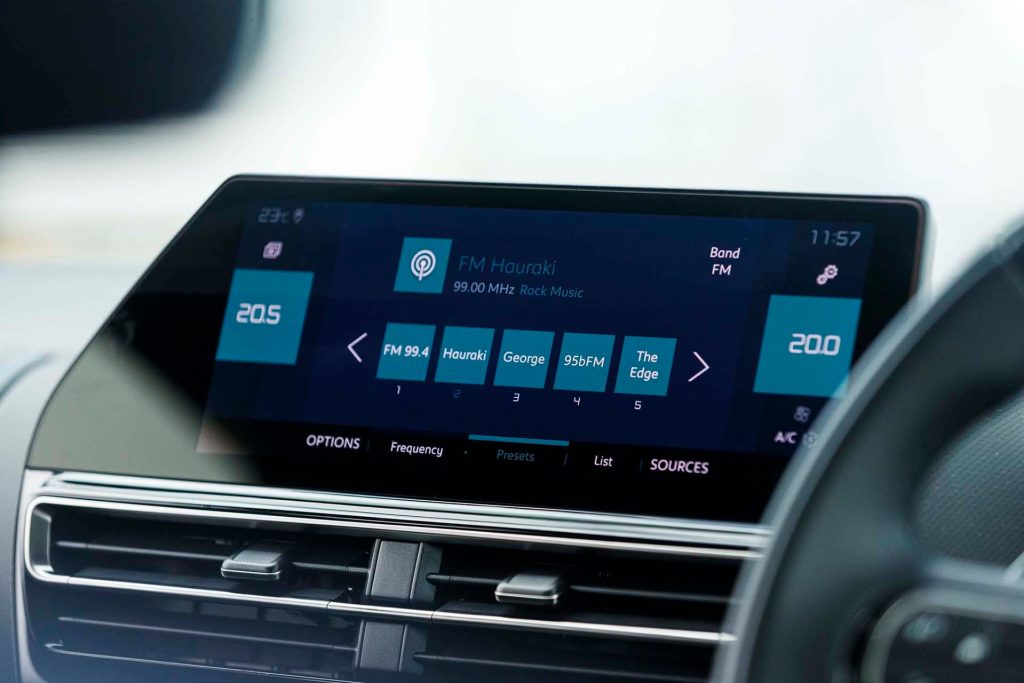
Our advice to the plug-in buyer is to recharge at every opportunity to maximise that emissions-free travel. With a depleted battery, running in hybrid mode, the fuel use readout registered 7.8L/100km for 100km of city running. So only buy a plug-in hybrid if you can, and intend to recharge it every night. This takes around 6.5 hours from flat using the supplied three-pin plug. They say it takes two hours on a wall box, enabling the full use of the 7.4kW on-board charger. This might be a solution for your place of work to recharge during the day, otherwise, the plug will do.
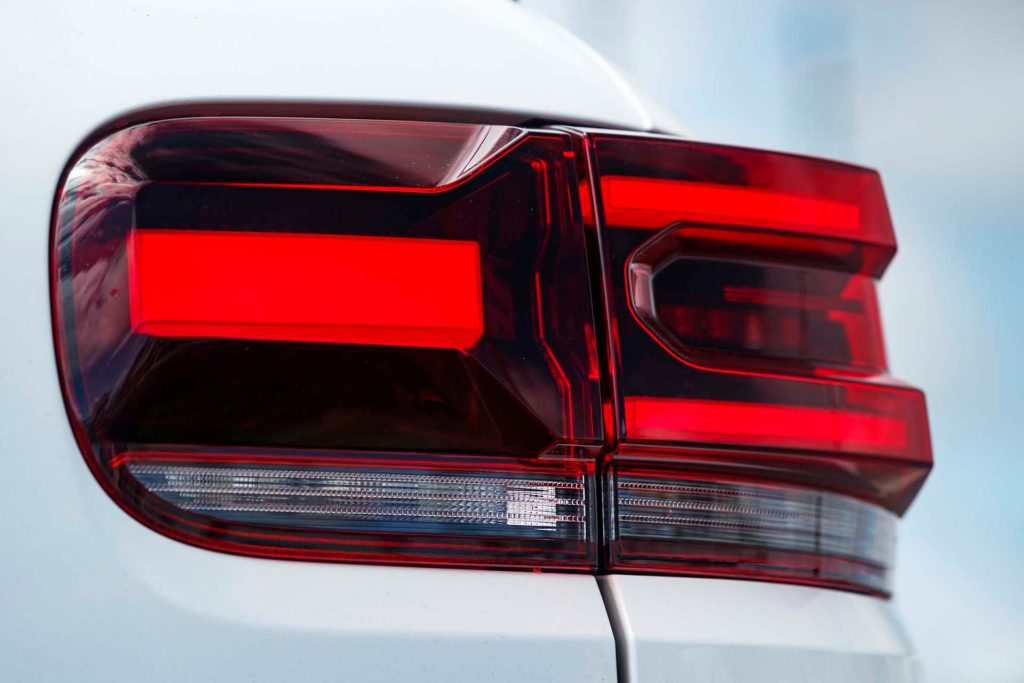
Helpful hybrid bits include a ‘Save’ mode allowing you to bank some battery power for later in the journey and you can defer the charge time so you can plug the car in when you get home but it won’t start until the off-peak rates kick in.
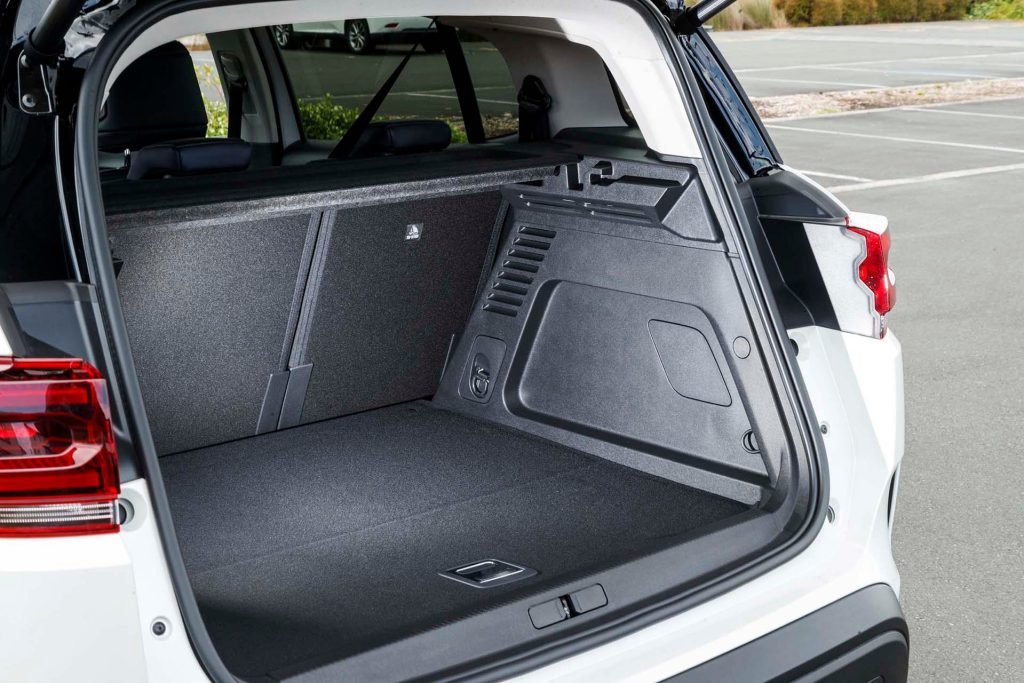
In its electric mode, it’s not as spritely as some cheaper SUV BEV models. Acceleration to 100km/h takes a leisurely 13sec when EVing, while it’ll get there in 8.8sec in Sport mode after adding petrol power to the equation. The hybrid is actually a tad slower than the conventional model, for which you can blame the additional weight of the electrics (1770kg versus 1430kg).
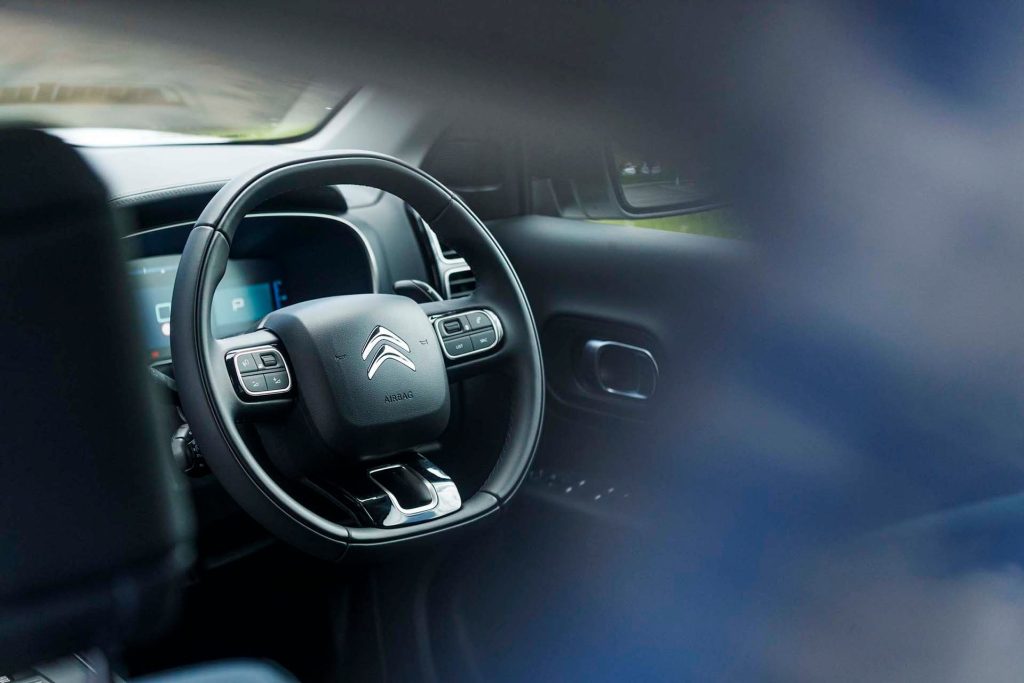
The journey is fairly quiet, things like laminated side windows keeping extraneous road noise from the equation and when the engine does come online it’s hushed too. The steering is fluffy light, the big wheel easily twirled from lock-to-lock. And because the French never know where they are going, U turns are easy with a turning circle of 10.7m.
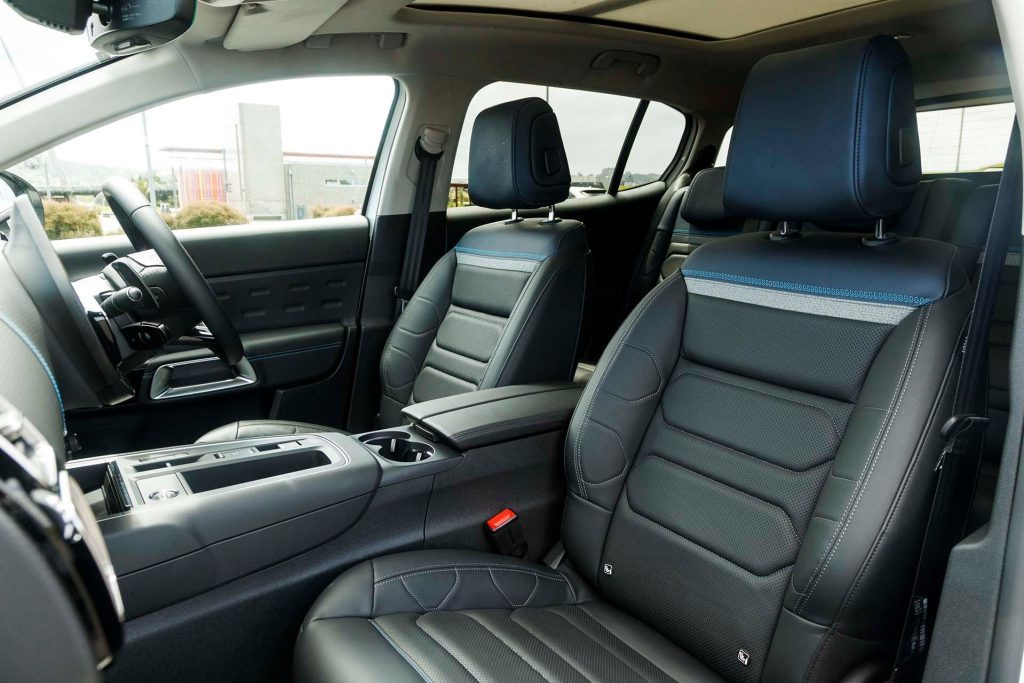
The ride is fairly cushy with the sting taken out of bigger bumps by Citroen’s ‘Comfort Cushion’ shockers. As such the roll control isn’t so strict, so it leans into the curve. However, it quickly settles itself and has a surprising fortitude in the bends. In the Hybrid mode, and with the transmission’s B mode selected (this adds brake regen), it’s a calm cruiser; simply lift the throttle and it slows for the curves. During city running, the brake pedal is rather sensitive in action, making it hard to stop smoothly. Even the car itself struggles to bring you to a smooth halt when it’s in control via the active cruise.
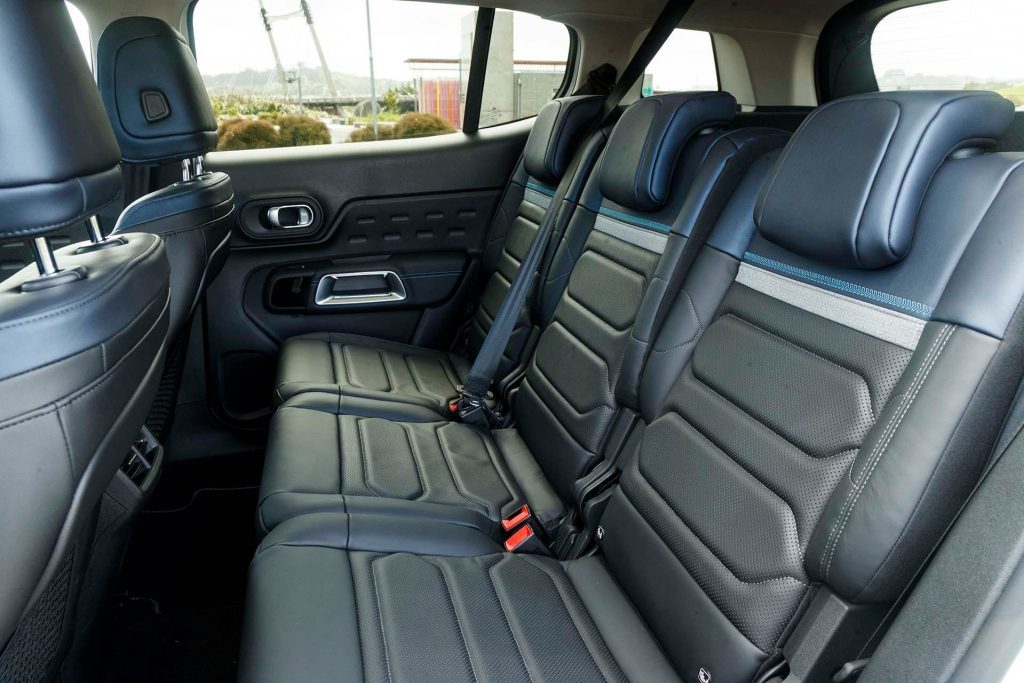
Citroen’s comfort theme extends to the seats. They are fairly sumptuous, your frame sinking into the ample padding upon entering. There’s just enough side bolstering to keep you in place, and a generous lumbar pump to help improve your seated posture. There are some nice finishes in the cabin too, tempered by a decent dollop of hard plastics in places. Citroen sure has got some miles out of its switchgear; the window lifts must date back to the 2000s, as does the wand for the active cruise, which was once used as a stereo remote. Oddly, it does work quite well given its former role. There is a configurable 12-inch digital instrument panel, which has a clear digital speedo, a good trip data screen and a diagram of energy flows, to show you which bits are doing what. There’s a new 10-inch touchscreen, said to be rendered in HD. The graphics look sharp, but it seems the reverse camera wasn’t upgraded, the image still grainy. The wide screen format also means a small display for the sat nav map. It’s high up on the dash for ease of use, and there are a range of menu buttons to help bring up the most used functions.
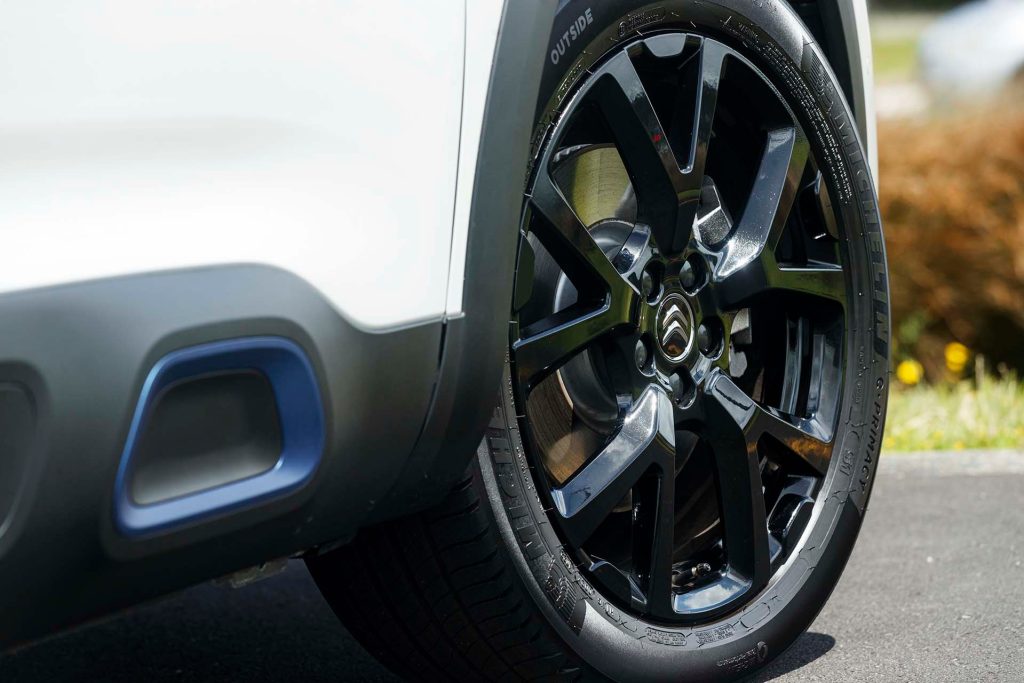
The C5 is city friendly, not too long at 4.5m, making for easy parking. Just don’t expect oodles of rear leg room; there’s only just enough for adults. But you do get three individual seats in the back, good if you have three kids, who each have a clearly defined zone. A flat floor means the middle passenger gets some leg room too. The seats are on sliders, though this is more for increasing boot space, rather than adding legroom. The hold is accessed via a slow moving powered tailgate and, in the hybrid, you have less usable space (460 versus 580L) as the battery is located under the floor. The rear seats fold down flat however for extra load carrying.
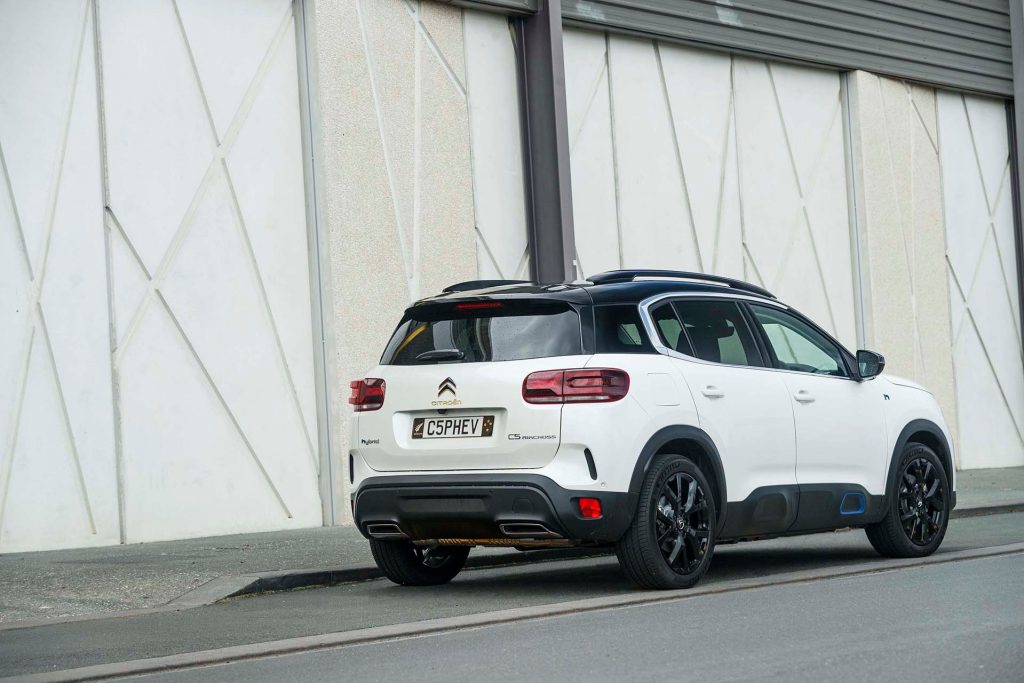
So here’s another hybrid option where you’ll need to take a few things into consideration before signing up. As mentioned, the economics aren’t the only aspect of the equation. But if they are, there are cheaper plug-in hybrids on the market.
| Model | Citroen C5 Shine Hybrid |
| Price | $79,990 |
| Clean Car Discount | Rebate -$5750 |
| Engine | 1598cc, IL4, T,DI |
| Power/Torque | 133kW/300Nm |
| Motor | single |
| Hybrid System output | 165kW/360Nm |
| Battery | 13.2kWh |
| Drivetrain | 8-speed automatic, FWD |
| Fuel Use | 1.0L/100km |
| C02 Output | 19g/km |
| 0-100km/h | 8.81sec |
| 80-120km/h | 5.15sec (144m) |
| 100-0km/h | 36.10m |
| Stability systems | ABS, ESP |
| Safety | AEB, ACC, BSM, LDW, RCTA, ALK, AHB |
| Luggage capacity | 460-1510L |
| Tow rating | 750kg (1300kg braked) |
| Service intervals | 12 months/15,000km |
| Service plan | $2190, 3years, 45,000km |
| Warranty | 5yrs, 100,000 km |
| ANCAP rating | not yet rated |
| Weight | 1770kg (claimed) |


